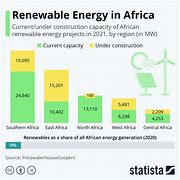Africa has vast potential for renewable energy, but is liberalizing energy markets in African countries the key to achieving true energy access across the continent? The UN Sustainable Development Group highlights a stark reality – almost half of Africa’s population lacks access to electricity, contributing to over 80% of the global electricity gap. This emphasizes the urgent need for substantial improvements in the energy sector.
While Africa has abundant energy resources, a significant portion of its population still struggles with unreliable and unaffordable electricity. Despite investments totaling around $110 billion in 2024, insufficient funds are allocated towards clean energy initiatives. This raises concerns about meeting the goal of providing universal energy access by 2030.
On one hand, many African nations are opening up their energy sectors to private investments to boost infrastructure development. This move aims to foster collaboration between governments and private entities to enhance service delivery and expand electricity access. However, a critical question emerges – can these endeavors truly address the pressing issue of widespread energy poverty?
Hans-Arild Bredesen, CEO of Bredesen Consulting in South Africa, weighs in on this crucial matter by stating:
“It’s not an either-or discussion between off-grid power, mini-grids and interconnected networks.”
He emphasizes that deploying traditional power lines everywhere could be exorbitant and ineffective for remote areas. In such cases, cost-effective solutions like mini-grids powered by solar panels and batteries might offer a more viable alternative.
Furthermore, embracing decentralized energy solutions can alleviate strain on national grids while introducing flexibility and diverse choices through emerging power traders and aggregators. Yet, challenges persist as inadequate grid interconnections hinder the growth of renewable projects in several regions across Africa.
Bredesen draws parallels from Norway’s industrial history where strategic placement of hydropower stations catalyzed economic development. He recounts how industries were established near waterfalls to harness renewable resources efficiently. This historical example underscores the importance of aligning industrial growth with available energy sources – a principle that could be applied to electrify communities in Africa.
Grid interconnection emerges as a pivotal factor for optimizing Africa’s diverse energy mix. Connecting countries like Zambia and Tanzania promises enhanced dynamics within the continent’s power network while facilitating efficient utilization of various renewable sources such as hydropower, wind, solar, and geothermal energies.
Addressing limited national demand for new generation capacity poses another challenge for African countries like Namibia. By leveraging abundant renewables through export-oriented strategies supported by large investors, countries can attract vital investments essential for expanding infrastructure. Establishing integrated regional power markets fosters cross-border collaborations that drive economic growth and community development.
In conclusion, fostering both grid-based developments alongside off-grid solutions remains paramount in bridging the existing electricity divide across African landscapes—from densely populated urban centers to remote villages like those nestled within Maasai Mara. As efforts continue towards advancing sustainable energy practices across the continent, balancing traditional grid expansions with innovative off-grid approaches will be instrumental in achieving comprehensive energy access for all Africans.

